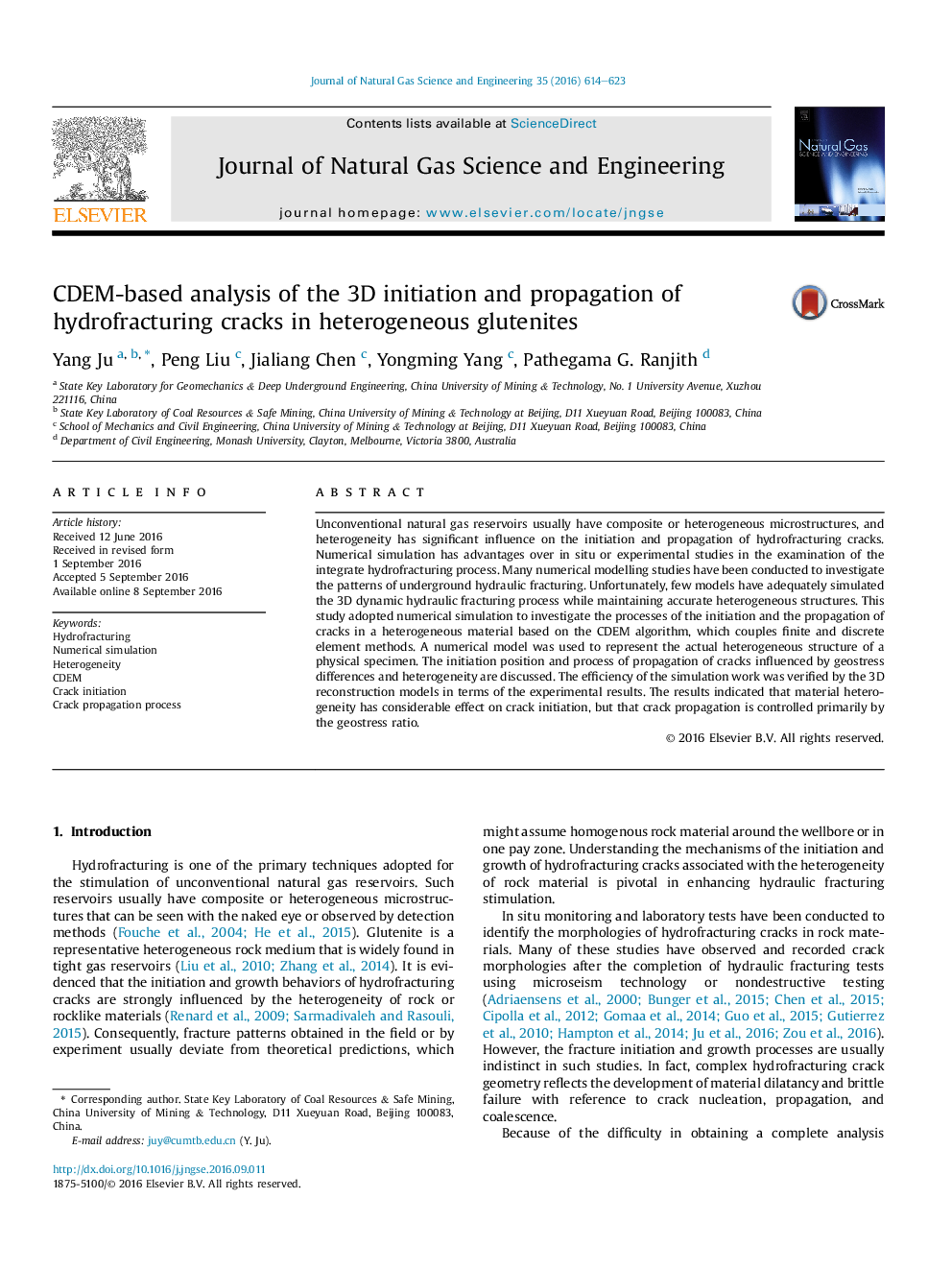| Article ID | Journal | Published Year | Pages | File Type |
|---|---|---|---|---|
| 6481572 | Journal of Natural Gas Science and Engineering | 2016 | 10 Pages |
â¢A novel CDEM method was used for numerical simulation of hydraulic fracturing.â¢3D initiation and propagation of cracks were investigated using heterogeneous model.â¢Material heterogeneity has considerable effect on crack initiation.â¢Crack propagation is controlled primarily by geostress difference.
Unconventional natural gas reservoirs usually have composite or heterogeneous microstructures, and heterogeneity has significant influence on the initiation and propagation of hydrofracturing cracks. Numerical simulation has advantages over in situ or experimental studies in the examination of the integrate hydrofracturing process. Many numerical modelling studies have been conducted to investigate the patterns of underground hydraulic fracturing. Unfortunately, few models have adequately simulated the 3D dynamic hydraulic fracturing process while maintaining accurate heterogeneous structures. This study adopted numerical simulation to investigate the processes of the initiation and the propagation of cracks in a heterogeneous material based on the CDEM algorithm, which couples finite and discrete element methods. A numerical model was used to represent the actual heterogeneous structure of a physical specimen. The initiation position and process of propagation of cracks influenced by geostress differences and heterogeneity are discussed. The efficiency of the simulation work was verified by the 3D reconstruction models in terms of the experimental results. The results indicated that material heterogeneity has considerable effect on crack initiation, but that crack propagation is controlled primarily by the geostress ratio.
